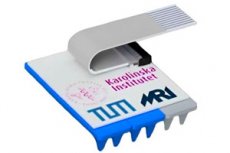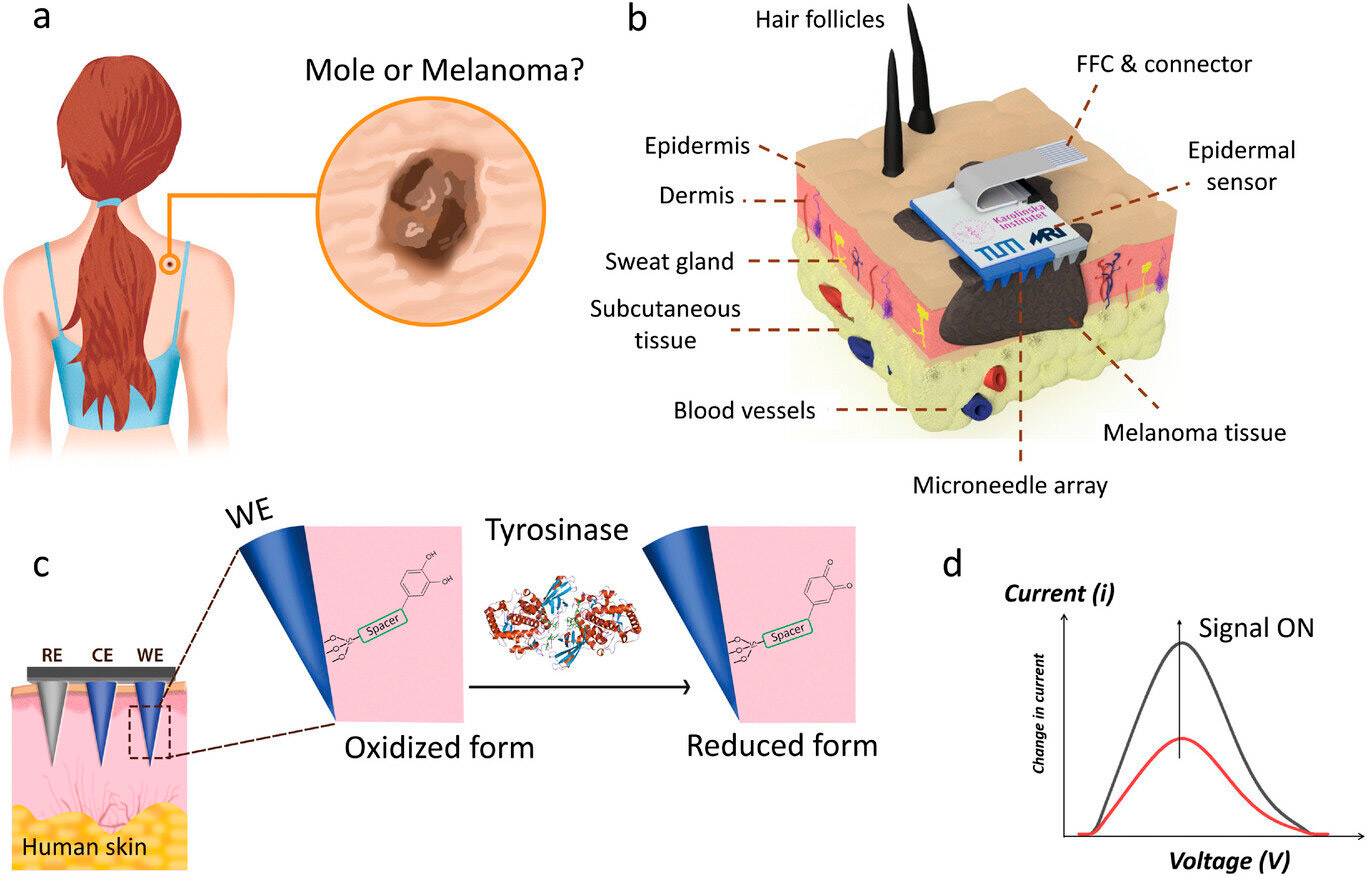New publications
Researchers have developed a micro-needle patch for early detection of skin cancer
Last reviewed: 02.07.2025

All iLive content is medically reviewed or fact checked to ensure as much factual accuracy as possible.
We have strict sourcing guidelines and only link to reputable media sites, academic research institutions and, whenever possible, medically peer reviewed studies. Note that the numbers in parentheses ([1], [2], etc.) are clickable links to these studies.
If you feel that any of our content is inaccurate, out-of-date, or otherwise questionable, please select it and press Ctrl + Enter.

Researchers at the Karolinska Institutet have developed a new method for detecting malignant melanoma. A new type of patch equipped with microneedles can identify the biomarker tyrosinase directly in the skin, according to a study published in the journal Advanced Materials.
The patch is equipped with microneedles that can detect tyrosinase, an enzyme that is an important biomarker for malignant melanoma. By measuring levels of this enzyme directly in the skin, researchers can quickly identify changes associated with the disease.
"We used human tissue from healthy individuals. By applying tyrosinase directly to the skin, we were able to simulate skin cancer," explains the study's final author, Onur Parlak, an associate professor at the Department of Solar Medicine at Karolinska Institutet.
"This is an important step forward in improving skin health monitoring, and the method could also be used to screen for other biomarkers by simply changing the design."

Schematic illustration of an epidermal microneedle sensor patch with a smart probe. A demonstration of melanosis skin on the back of a patient is shown. Source: Advanced Materials (2024). DOI: 10.1002/adma.202403758
Malignant melanoma is the most serious form of skin cancer and the fastest growing cancer. The study shows that a new patch could be an alternative to current diagnostic methods, leading to earlier detection and treatment of malignant melanoma. The researchers hope that their work will help reduce the number of procedures and improve the quality of life of patients.
“Our method is less invasive and has the potential to provide faster and more reliable results than traditional biopsies,” says Parlak. “Our goal is to continue to develop and improve this technique to offer more accurate and painless diagnostics.”
